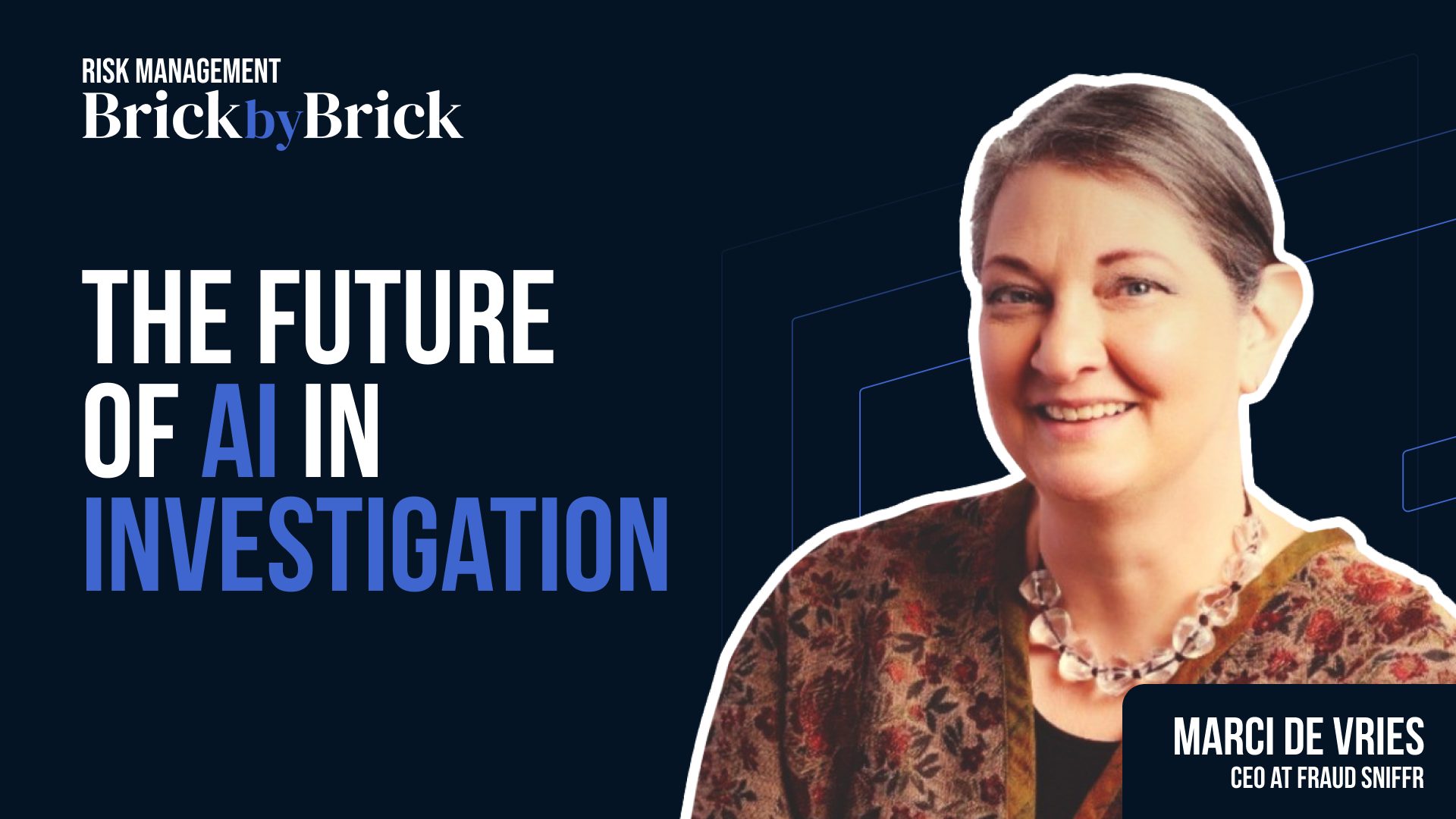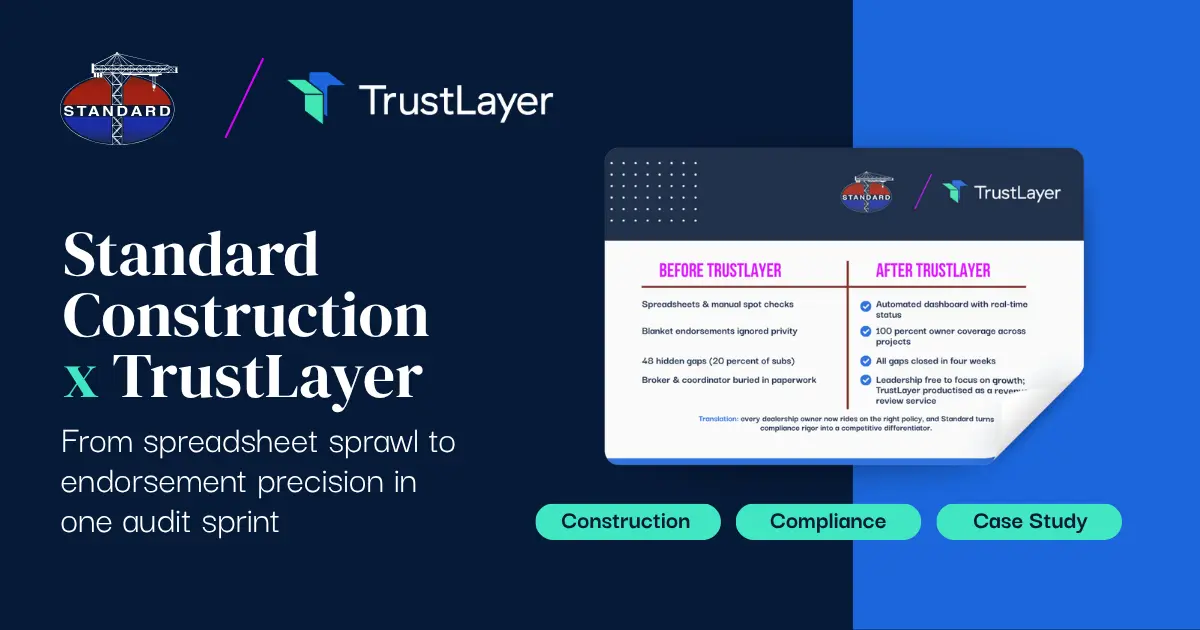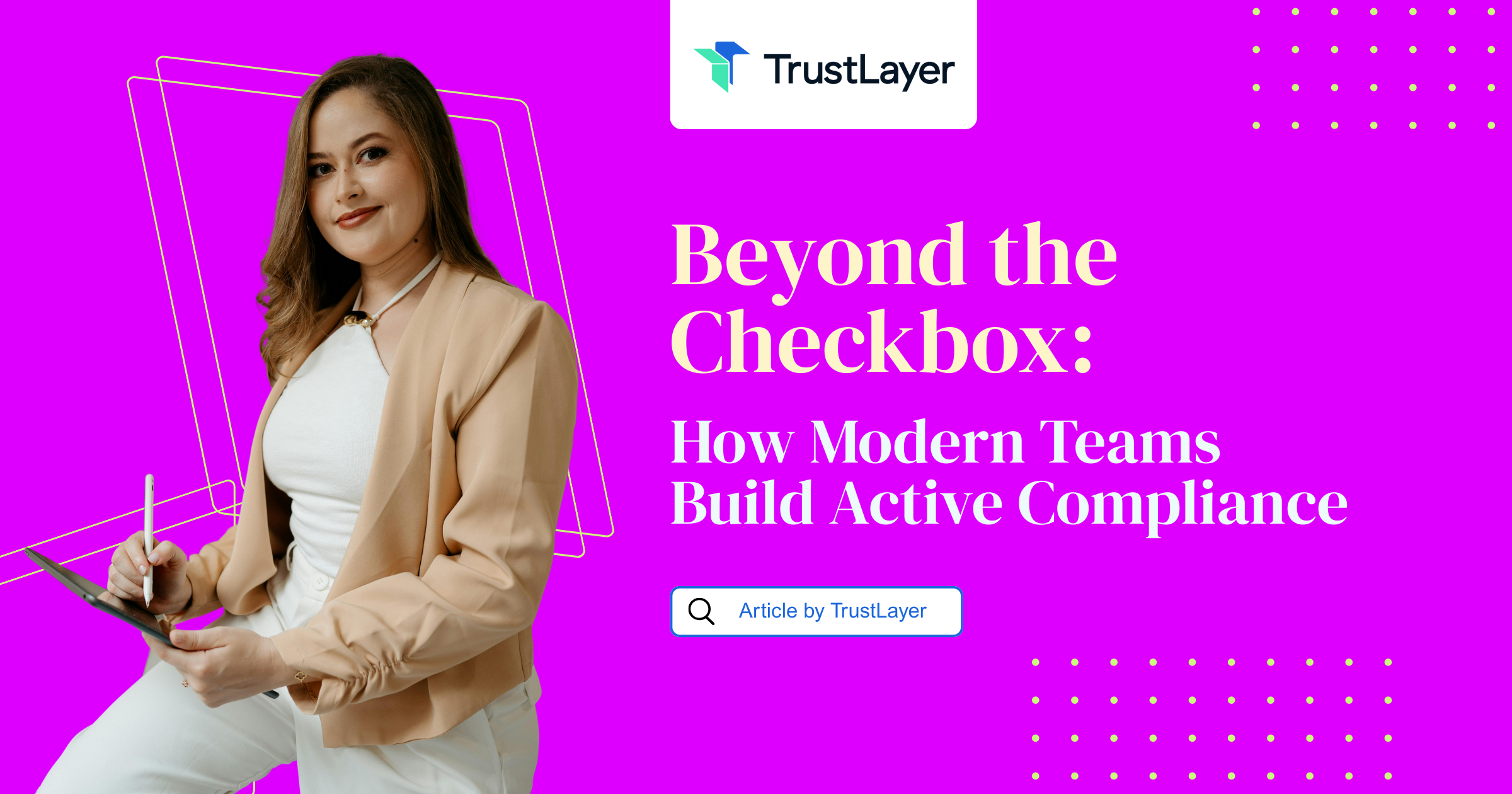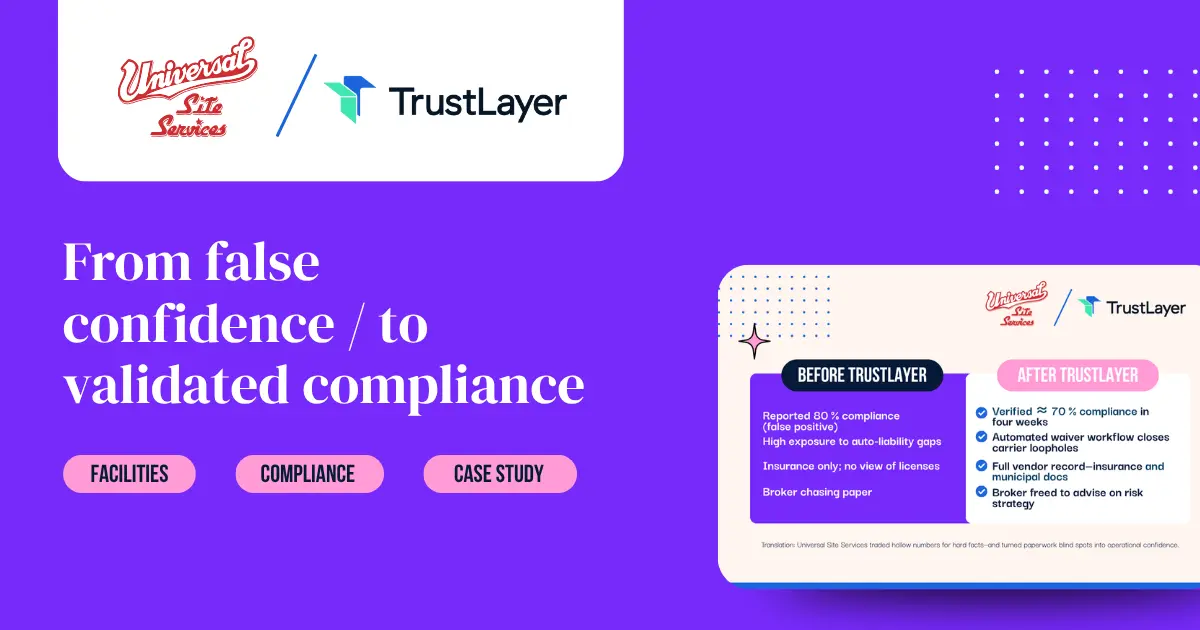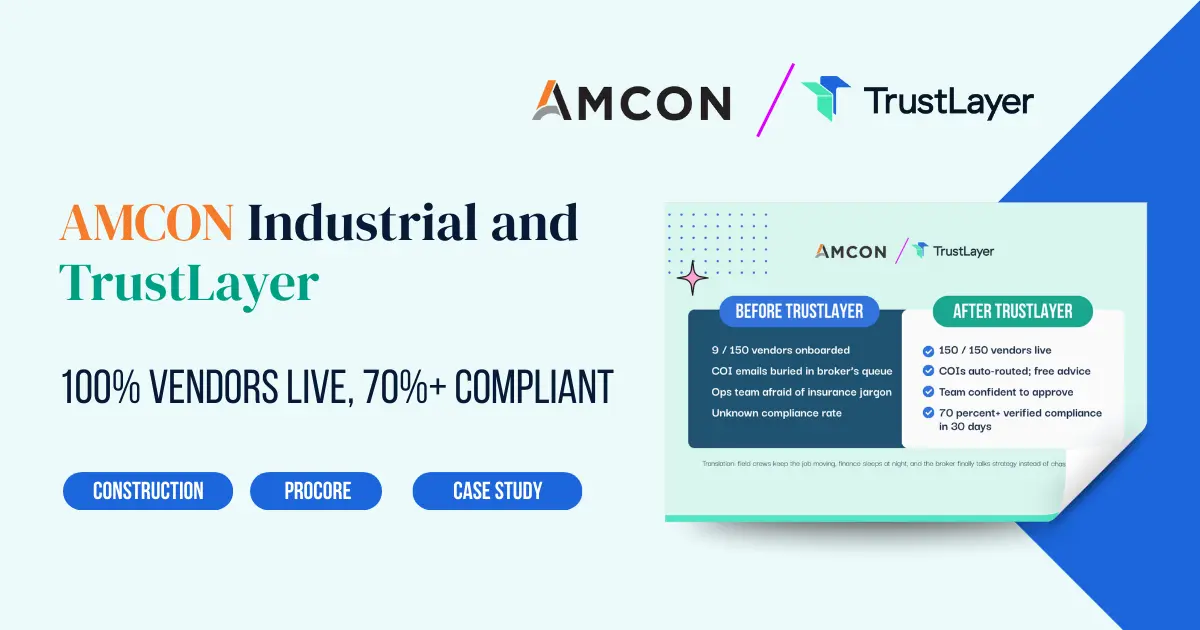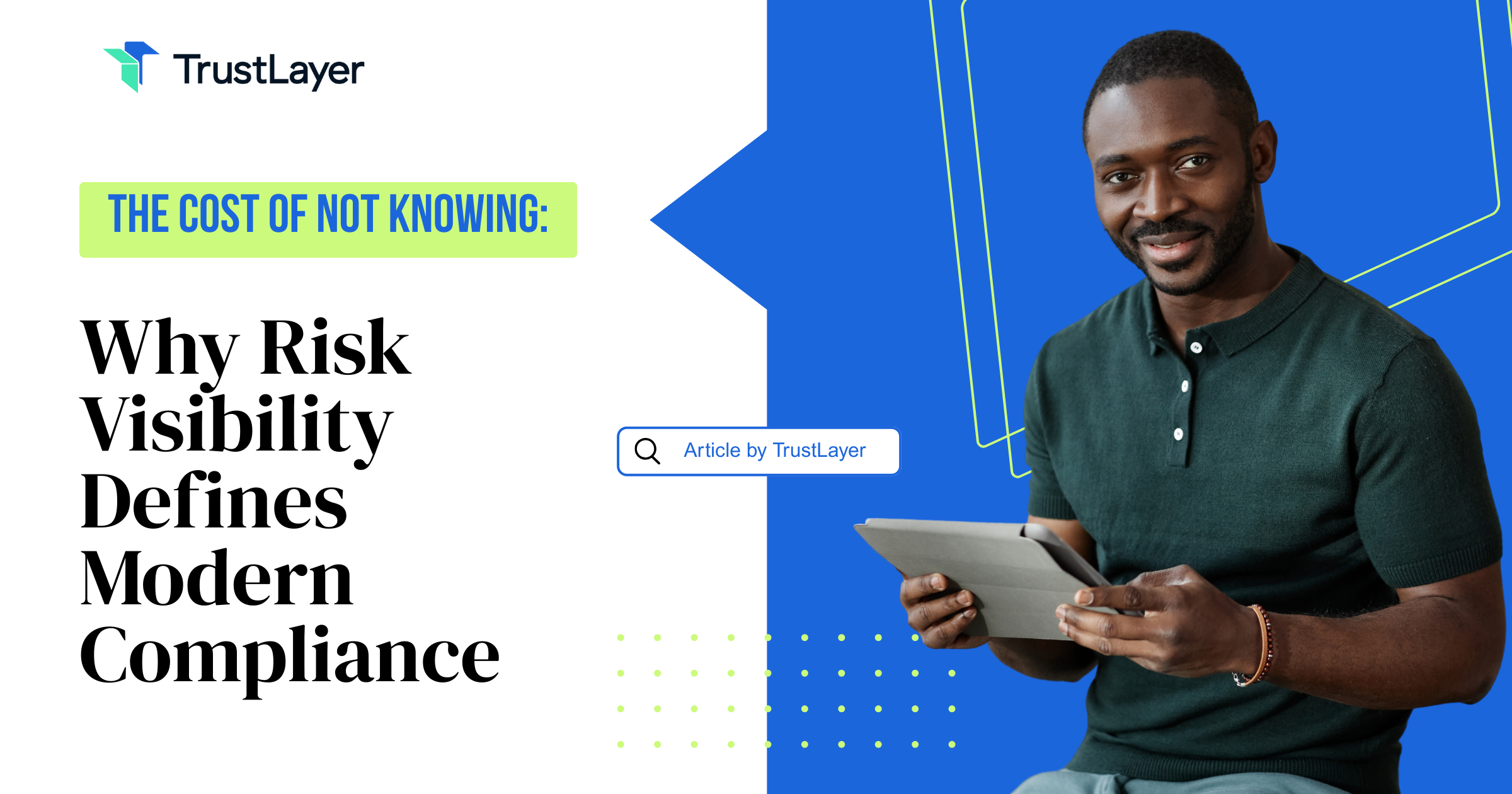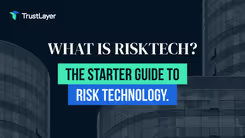 Resources
Resources Beyond Buy and Pray: How Van Carlson's 831B Captives Give Small Businesses Big Risk Power
Beyond Buy and Pray: How Van Carlson's 831B Captives Give Small Businesses Big Risk PowerBeyond Buy and Pray: How Van Carlson's 831B Captives Give Small Businesses Big Risk Power
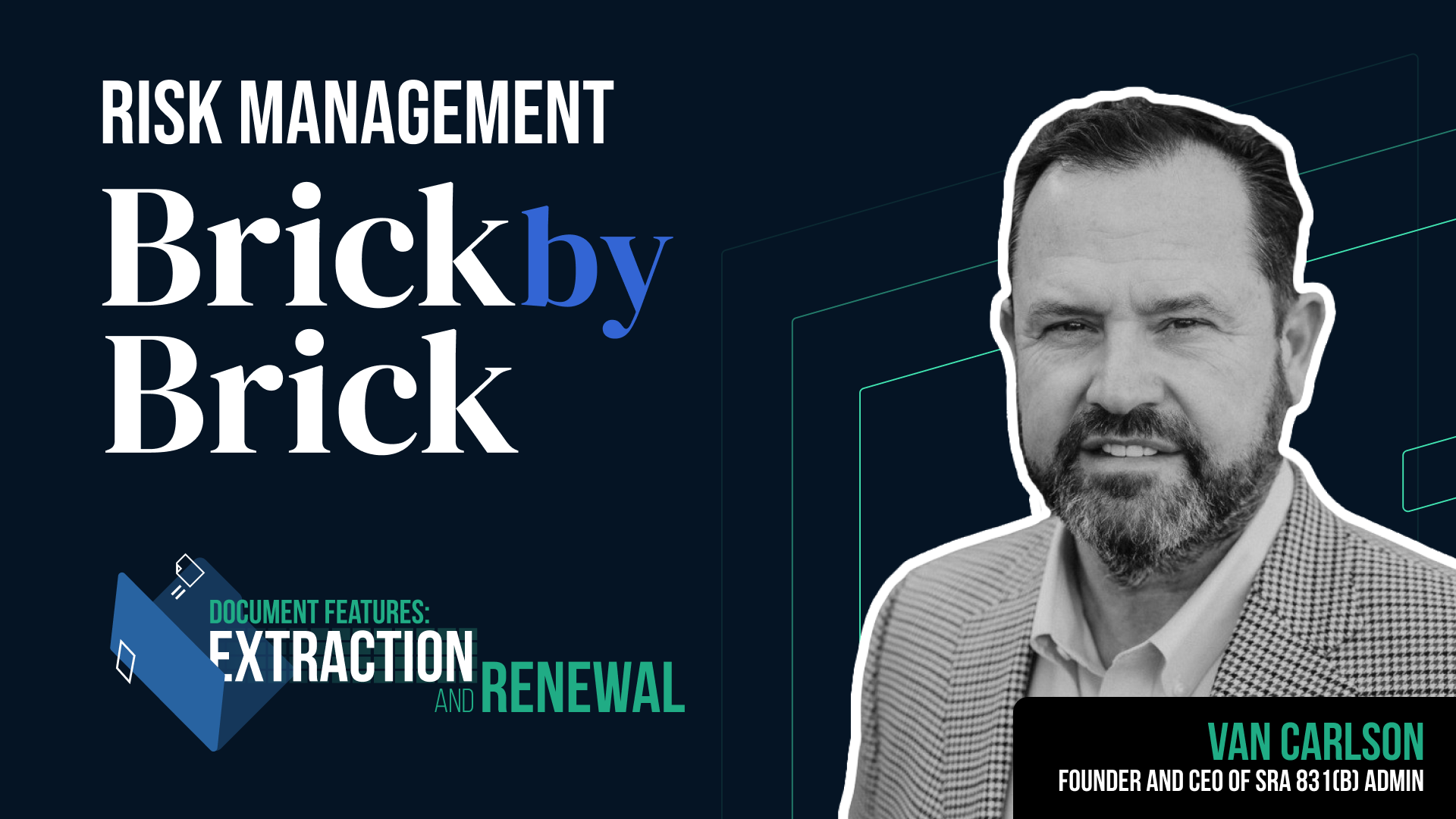
In a recent episode of Risk Management: Brick by Brick, host Jason Reichl sits down with Van Carlson, Founder and CEO of SRA 831(b) Admin, for an eye-opening conversation about how small and medium-sized businesses can access the same strategic risk management tools that Fortune 500 companies have used for decades. From understanding the evolution of 831B captives to learning about innovative "halo coverage" that fills gaps traditional insurance won't touch, Van shares insights from 30 years of helping business owners move beyond the "buy and pray" insurance mentality.
To find out how TrustLayer manages risk so that people can build the physical world around us, head to TrustLayer.io.
The Risk Awareness Paradox: Why Worrying Means You're Winning
Van opens with a counterintuitive truth that every business owner needs to hear: "Once you elevate to your company, achieve to the level of your company where you are worried about risk, I mean, you're winning."
This flies in the face of conventional wisdom that suggests successful businesses shouldn't worry. But Van argues that risk awareness is actually a sign of maturity and success. Entrepreneurs must have short-term memories and optimistic outlooks to survive, but as companies grow, the ability to evaluate risk-reward at every turn becomes essential.
The businesses that thrive aren't the ones ignoring risk—they're the ones strategically managing it through smart financing structures rather than hoping traditional insurance will save them when disaster strikes.
What Actually Is an 831B and Why Should You Care?
Here's where Van breaks down the basics in a way that makes sense. An 831B refers to a section of the federal tax code that determines how small insurance companies get taxed. The key benefit? Any underwriting profit within the insurance company stays tax-deferred as long as premiums remain under $2.85 million per year.
This isn't some new loophole—the provision was introduced in the 1986 Tax Reform Act specifically to help small-to-medium market insurance companies build surplus and take on more risk. Large companies have used these structures for decades. UPS, for example, has been sued by the IRS more than any other publicly traded company precisely because they operate extensive captive insurance programs.
But here's what most people miss: this isn't just about tax benefits. As Van emphasizes, "If you're doing this for the motivation of tax purposes only, then we're probably not the manager for you." The real value comes from strategic risk management for exposures traditional insurance won't adequately cover.
The Risks Traditional Insurance Is Leaving Behind
Van identifies the critical gap in today's insurance market: business interruption, supply chain risk, brand protection, dispute resolution, and cyber incidents that go unreported. About 60% of cyber claims never get submitted to insurance carriers because businesses fear the consequences or hope the issue will slide by unnoticed.
Modern businesses face complexity that didn't exist 40 years ago when the 831B code was created. Who could have predicted cyber risk or supply chain disruptions on the scale we see today? Traditional insurance carriers respond to new risks by adding exclusions and limitations—effectively taking rate increases without appearing to raise premiums.
Van's observation hits home: "If you're paying the same amount of premium you did last year for the same policy, but the policy has five more exclusions in it or there are five more limitations, they took a rate increase on you. It just doesn't look like it."
The Halo Coverage Innovation
SRA 831(b) Admin developed what Van calls "halo coverage" to address this exact problem. Similar to how umbrella policies sit over liability coverage, halo coverage addresses first-dollar losses, exclusions, and limitations on business interruption and property policies.
Think about what's happening in the market right now: co-insurance requirements on properties, actual cash value minus depreciation on roofs after a certain age, sub-limits on business operating policies that are so low they barely cover realistic incidents. The insured ends up self-funding these risks anyway—so why not do it strategically with pre-tax dollars?
Van's team starts by conducting a full assessment of existing policies, listening to client challenges, and understanding industry-specific risks. They're not trying to increase or decrease risk—they're helping businesses fund the risks they're already taking in a more efficient way.
When $400,000 in Unexpected Costs Doesn't Break Your Business
Van shares a compelling success story that illustrates the power of strategic risk planning. A major denim supplier had a strong contract with box stores for name-brand products. The contract included severe penalties—if he didn't deliver on time, he'd lose the contract and owe them money.
When supply chain issues threatened his delivery timeline, he faced a choice: lose everything or pay $400,000 to airfreight denim instead of using standard shipping containers. That kind of unexpected expense would devastate most businesses, especially in an industry with thin margins where volume is everything.
But because this supplier had been funding an 831B program over the years, he could draw on those dollars and not miss a beat. The alternative? That expense comes straight from after-tax profits or operating capital, potentially creating a cash flow crisis that cascades into other problems.
The "Health Savings Account" for Your Business
Van's best analogy for understanding 831B structures: "This is like a health savings account for your business, right? To pay for unexpected expenses. Your insurance is not going to cover it."
Just as health savings accounts let individuals set aside pre-tax money for expected medical expenses, 831B programs let businesses set aside pre-tax money for expected risk events. You take a deduction now as if the risk event happened, fund the program, and hope you don't need it. Down the road, if you haven't had major claims, it becomes another retirement bucket for business owners.
The key difference from traditional insurance? You're building an asset rather than just paying premiums that disappear whether you have claims or not. And you're covering risks that traditional insurance excludes or severely limits.
The Future: 831B as Standard Business Practice
Van predicts these programs will become as common as 401(k)s, and the trend lines support his view. Traditional insurance carriers are adding exclusions and limitations while business risk complexity increases. The burden continues falling back on insureds regardless of premium levels.
SRA 831(b) Admin is having a record year, driven partly by tariff concerns creating awareness about supply chain risk and political risk. Business owners are thinking about exposures they never considered before—and realizing traditional insurance won't help them.
For businesses in the agricultural sector, the shift is already happening. Farmers face single-peril exclusions on hail, co-insurance requirements, and actual cash value depreciation. They're not afraid of taking on their own risk—they just need efficient structures to do it.
Final Thoughts
Van's philosophy centers on education rather than salesmanship: "We're not here to complicate the business owner's lives. It's what we do every day. We're just here to educate the client, bring them up to speed."
The businesses that will thrive in the coming years are those that stop relying solely on traditional insurance and start thinking strategically about risk financing. That doesn't mean abandoning traditional insurance—it means complementing it with structures that capture long-term value and cover exposures that carriers won't.
As Van puts it, when you're doing well enough to worry about risk, you're winning. The question becomes: are you managing that risk efficiently, or are you just hoping nothing bad happens?
To hear more insights about strategic risk financing for small and medium-sized businesses, tune in to this episode of Risk Management: Brick by Brick.
👉 Spotify: https://tinyurl.com/vaj5kydj
👉 Apple Podcasts: https://apple.co/48HNaQQ
👉 YouTube: https://youtu.be/TVBPa-J53LQ
Podcast Host: Jason Reichl
Executive Producer: Don Halliwell


